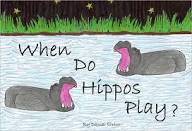Many online posts appear as snippets of conversations joined somewhere at their midpoint. They are usually missing crucial ‘set ups.’
No one should lose sleep over confusing social media messages. As communication, there are at the bottom of the food chain. Even so, these posts have a puzzling feature that says something interesting about how we now relate to others.
A truism about these digital platforms is that it can be hard to know where an outgoing post is going, and what has come before. The result is an endless stream of message fragments. My experience is mostly limited to seeing Facebook posts intended for a few thousand living in the same area. Many posts go to what Facebook terms the “unconnected:” people that algorithms peg as ‘might be interested.’ That’s a slippery audience, which is a given in this medium. In additon, odds favor bumping into partial “conversations” that walk all over a basic rule for structuring a narrative: know exactly who will receive it and what they may not know.

Looking at screens has made us lazy in sorting all of this out. Many folks who have a comment, announcement or observation will make it without including an informal preamble of defining particulars.
We know we must bring a friend up to speed if we have news beyond what they already know. In actual discourse we are good at seeing the puzzlement of another that indicates that they need more information. When this feedback is missing in the unilateral world of social media, we often omit what could be called essential ‘scene setting.’ What conversation analysts call “backgrounding” often gets ignored, as when a post is offered to explain that Maggie has been given some new meds that might help her failing kidneys. I read something like this recently, with a good deal of additional medical information included as well. But only near the end of the post was there a big mid-course correction when the writer noted that “a vet“ gave her only a 50-50 chance. Up to that point the unsolicited health report seemed to be guiding us to a story about a hapless woman in town. To be sure, no one wants to hear about any creature’s health struggles. But the incidental mention of a veternarian obviously changed the character of the message.
Ditto for offers of a professional service with no mention of where the person is located and how they can be contacted, or restaurants that reference their name but not their location, or landlords with property of an unspecified size for rent in an unspecified location. Even messages to those more closely “connected” to the sender often omit details that are more assumed than known. If Charley has a new job, remind us again of what the old one was. If a sister is moving to Iceland, give us some sense of the reason for the big change. Many posts appear as snippets of a conversations joined somewhere at their midpoint.
 If it helps, think of the five story parts taught to journalists and story tellers. Leave out any of these elements and messages begins to falter.
If it helps, think of the five story parts taught to journalists and story tellers. Leave out any of these elements and messages begins to falter.
My best guess about why essential details are omitted is that some of us have lost the critical “awareness of the other” that lies at the base of most social relations. Compared to previous generations, we now think of communication less in terms of dyads exchanging views than single sources launching their thoughts into the ether.
 A second cause may be even more fundamental. Humans connecting with others have absorbed incidental and formal information through the durable structure of story-telling, which is actually the template for most human thought. Even if we can’t name it, we know this template and its requirement to establish a degree of scene setting. As noted above, there is a sequence to these things. As others await the retelling of an event, the imperative to get the set-up right can even produce a note of anxiousness. This sequencing is clear to most persons retelling a joke, but evident in all sorts of statements, even a child’s book about hippos. Take the immediacy of the another’s physical presence away–obviously something social media routinely allows–and the honoring of this structure may be ignored.
A second cause may be even more fundamental. Humans connecting with others have absorbed incidental and formal information through the durable structure of story-telling, which is actually the template for most human thought. Even if we can’t name it, we know this template and its requirement to establish a degree of scene setting. As noted above, there is a sequence to these things. As others await the retelling of an event, the imperative to get the set-up right can even produce a note of anxiousness. This sequencing is clear to most persons retelling a joke, but evident in all sorts of statements, even a child’s book about hippos. Take the immediacy of the another’s physical presence away–obviously something social media routinely allows–and the honoring of this structure may be ignored.
We have no choice but to accept the continual chaos of online messaging. But solutions are easy. Think of a potential reader outside of your immediate circle. What do they need to know, and how can that be added in a brief but helpful way? Most explanations of one’s own circumstances often come with what screenwriters would consider essential “exposition.” It takes some effort but little space to construct a useful set up for readers even in unspecified audiences.
![]()



 charities, cities, arts groups and immigrant communities. Instead, what little rhetorical energy that remains is used for personal verbal abuse, taunts aimed at our former Canadian Allies, and senseless indictments of countless others actually doing constructive work. There is little time or space devoted to appealing to our best inclusive values. Instead, the abandonment of this custom has pulled down the edifice of American civic discourse.
charities, cities, arts groups and immigrant communities. Instead, what little rhetorical energy that remains is used for personal verbal abuse, taunts aimed at our former Canadian Allies, and senseless indictments of countless others actually doing constructive work. There is little time or space devoted to appealing to our best inclusive values. Instead, the abandonment of this custom has pulled down the edifice of American civic discourse.